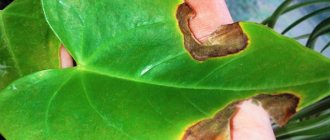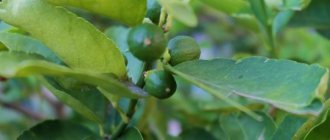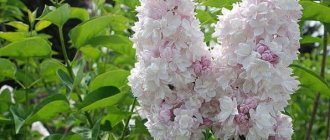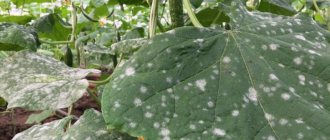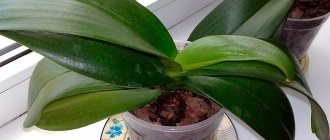3596
Due to the variety of shapes and colors of inflorescences, lilac is one of the most popular garden shrubs. There are both early flowering and remontant specimens. Despite the plant's hardiness, climatic conditions and improper care can negatively affect the condition of the bush. There are several reasons why lilacs do not bloom. Their partial or complete elimination will soon ensure the restoration of the vegetative properties of the plant.
Lush flowering
Unsuitable soil composition
Although lilac has a reputation as a bush that grows on its own, it does have certain soil requirements :
- deep occurrence of groundwater (no closer than 1.5 m to the surface of the earth);
- neutral or close to neutral soil acidity (pH 6.6-7.5);
- moderate humidity;
- light sandy loam composition.
If you want to have healthy blooming lilacs on your site, keep in mind what the soil should definitely not be like :
- sour (you can try to deacidify it with lime, ash or dolomite flour, but the effect will not last long enough for lilacs);
- severe or swampy.
Some people risk planting lilacs in temporarily flooded areas by preparing a mound for planting, but in this case they will have to pay a lot of attention to caring for the roots of the bush. Experienced summer residents do not recommend wasting time and energy on growing lilacs in swampy soil, but instead planting plants that feel comfortable in “damp” soil.
Wrong soil
In order for varietal lilac to bloom in the garden or on a personal plot, you need to choose the right soil for it, because not on every land this shrub can grow properly and produce color. If the soil is swampy and groundwater does not pass far from the surface of the earth, then varietal shrubs have virtually no chance of proper growth and flowering.
You should not plant lilacs on soil where there is a large amount of liquid, so that the lilacs do not become waterlogged. In addition, soil with clay, which has a dense texture, is also poorly suited for the successful growth of lilacs. In order for the shrub to grow and bloom well, the soil must be dry enough and it must be fertilized. Knowing what to do to provide good conditions for lilacs, you can rightfully count on good results and a beautiful lilac color.
Errors during landing
Much in the future life of the plant depends on the correct planting. It is necessary to avoid common mistakes that can lead to various problems, including poor flowering. Here are simple rules for planting lilacs:
- drainage is placed at the bottom of the planting hole (40-50 cm deep) , for example, small stones, and only then it is filled with a fertile mixture (20 kg of humus, 30 g of superphosphate and 300 g of ash);
- The grafting site of the seedling cannot be covered with soil: it should be located 3-4 cm above the soil level.
It is best to carry out planting work in the evening or at least in cloudy weather. Timing for planting lilacs: in the spring before buds open or in the summer, after flowering and until September. Immediately after planting, you need to water the seedling generously at the root, and after the moisture is absorbed, mulch the tree trunk circle with a layer of 5-7 cm.
- Planting lilacs and subsequent care
Do you want to grow a gorgeous lilac bush on your site? It's possible.
Irregular pruning
Like many shrubs, lilacs need to be pruned every year. Otherwise, it will look ugly and will gradually stop blooming.
Usually lilacs are made in the shape of a ball. It is advisable to do pruning in early spring, even before the first buds appear, or in mid-summer. But this procedure is not advisable to carry out during flowering or autumn. First of all, dry branches are cut off.
If a lot of young shoots have grown around the lilac, then they must be removed with pruners, cutting off almost to the root. Otherwise, they will take all the nutrients from the mother bush. After which you need to shallowly dig up the soil around the bush, removing the root system of the shoots.
When pruning a bush, it is advisable to leave powerful shoots, cutting off smaller ones, since new shoots will then grow from the powerful ones.
If the bush is not trimmed, then every year the flowers will become smaller and smaller in size and quantity. Immediately after flowering, you need to cut off all the inflorescences that have dried out. Otherwise, seeds will appear in place of the flowers, which will take away all the useful substances from the tree.
Excess nitrogen
If you see that a lilac bush with a well-developed crown is fattening - intensively producing new shoots, but not blooming - most likely the matter is that the soil is oversaturated with nitrogen fertilizers. Fertilizing will not be beneficial if application rates are not followed.
Usually, lilacs begin to be fed with nitrogen 2 years after planting: every spring, 60-80 g of ammonium nitrate or 50-60 g of urea are added to the bush. But in cases where the soil is oversaturated with nitrogen, fertilizing is carried out less frequently: once every 2 years.
Excess amount of fertilizer
One of the likely reasons for the lack of color on a shrub is an excessive amount of nitrogen in the soil. Due to the excessive amount of nitrogen, new shoots begin to form in the lilac, and the bush noticeably increases in size, but there is no flowering. In this case, the bush may never bloom.
Fertilizing lilacs every year is not recommended because it exceeds the level of nitrogen in the soil, which is harmful to the color of the lilac. In order for fertilization to be beneficial, it is worth applying it once every two or three years.
Wrong place
Another fairly common reason that lilacs stretch out, do not bloom, or bloom poorly is that the place was poorly chosen for it: too shaded or windy. The main requirements for a site where lilacs will feel comfortable are the following:
- Most of the day, the place should be well illuminated by the sun: the western and eastern sides of the garden are suitable, but on the southern side the plant runs the risk of sunburn;
- the site should be located on a plain or, in extreme cases, on a gentle slope;
- the place should be sheltered from cold winds.
It is not recommended to plant lilac bushes next to pine and spruce. For information on how to correctly and effectively place lilacs in a garden on a country plot, read our material:
- Where and next to what to plant lilacs: 4 ideas for a spectacular flower garden
Don't know in which corner of the garden to plant lilacs? This article will help you choose the right location for your aromatic plant.
Diseases and pests
Even if you did everything correctly, and the lilac does not even think of blooming, on the contrary, it even began to look worse, its leaves curled, turned yellow or became covered with spots, the crown drooped. In this case, it must be carefully examined for the presence of pests or diseases.
First, the affected branches and leaves are removed, they must be burned, and the entire tree is treated with a pest control drug. If you do not start its treatment in time, then you should not expect flowering next year.
Every spring, even before the buds swell, it is necessary to carry out preventive treatment of the bush against pests and diseases. If this is not done, then the lilac can be attacked by insects such as moths, lilac leaf mites, leaf weevils, hawk moth caterpillars, and acacia false scale insects, which will be quite difficult to get rid of.
The following drugs will help get rid of insects: “Aktara”, “Iskra”, “Fufanon” and others. Bordeaux mixture or copper sulfate helps well against many fungal diseases. To make lilacs resistant to viral diseases, they are given phosphorus-potassium fertilizer every three years in the fall.
Incorrect pruning
In the life of many shrubs, including lilacs, regular pruning plays a significant role. If you neglect this event, the plant will not bloom and will take on an unsightly appearance - in a word, it will go wild. The right time for pruning lilacs is early spring (before the buds swell), at which time dry and weak branches are cut from the bush.
Overgrowth can and should be removed throughout the season. This is done with a shovel, cutting off the shoots below ground level. After the procedure, the soil around the bush is dug up to a depth of 5-10 cm.
With the help of pruning, we not only improve and improve the health of the bush, but we can also shape the crown. The most popular are 2 main forms - bush (ball) and tree. In the first case, in the spring, the first pair of buds is left at a height of 12-15 cm. Then, in the 3-4th year, 5-10 of the strongest and healthiest branches are selected from the crown of the bush, and the rest are cut off. The main shoot is shortened and the side shoots are pinched.
To form a tree (rather, this shape can be called a bouquet), during the first pruning, only one shoot is left, the most powerful one. The buds are left on it to a height of 50-80 cm (about 5-6 upper pairs), and the upper part is cut off. At the next pruning, only one of the upper pair of buds is left, blinding the second.
Immediately after the lilac has faded, it is necessary, if possible, to cut off all drying inflorescences. Otherwise, seed formation will begin, and this will greatly weaken the plant.
Reasons for the lack of flower stalks in lilacs and ways to eliminate them
Conventionally, all negative factors can be divided into:
- climatic;
- territorial;
- aging;
- improper care;
- negative impact of diseases and pests.
Bloomerang Ash
Climatic factors
Most varieties of lilac are suitable for growing in the sharply continental climate of Russia. However, remontant hybrids have low frost resistance, which makes it difficult for them to take root in the northern regions of the country. This is due to the fact that these shrubs have a non-buried root system. When the soil freezes from 200 cm and above, the rhizomes of the hybrid die. In the spring, during the active growing season, all the forces of a frozen bush go towards its rooting. As a result, the plant does not bloom for several seasons.
You can identify a frostbitten bush by its appearance. Green buds indicate the health of the plant, brown ones are a sign of a damaged bush.
To prevent freezing, tree trunk circles are insulated in late autumn using sawdust and agrofibre. It is recommended to replant capricious varieties in a greenhouse or conservatory for the winter.
Territorial reasons for the lack of flowering
Inflorescences do not form if the bush grows in a shaded area or the plantings are too dense. An exception to the list are varieties with dark panicles; they take root well in partial shade. In this case, the buds retain their natural shade throughout the entire flowering period without fading in the sun. With strong shading, the inflorescences and leaves become smaller, and the flowering period is halved. A few years after planting the shrub in the shade, it stops forming buds. This defect is eliminated by transplanting the seedling to an illuminated area.
Saplings
Frequent planting of bushes (the distance between the trunks is less than 1 m) can provoke the suppression of weak seedlings by stronger ones. Due to a lack of nutrients in the soil, low aeration and light, plants stop blooming. To resume vegetative processes, transplant to fertilized soil at an equidistant distance from each other.
Soil composition is a key factor in plant development. Fertile lungs of soil are optimal for any crop. While waterlogged soil provokes the development of putrefactive processes in the root coma. You can identify waterlogged soil by how easily the leaves fall off and rotten lilac trunks break off. This problem is solved by transplanting the plant into a hole with a prepared drainage layer.
Aging bushes and lack of care
The age of the stems affects the vegetative potential of lilacs. A young bush with flexible shoots produces 40 to 50 flowering panicles. A plant with a large number of skeletal branches bears almost no fruit. Lilacs over the age of 50 lose their vegetative properties. To increase clarity, anti-aging pruning is used. The resulting trimmings can be safely used to propagate lilacs by cuttings.
Improper care of lilacs can negatively affect the general condition of the perennial. Not knowing what to do with the plant, novice gardeners risk spoiling the soil with a high concentration of nitrogen or potassium preparations. An excess of inorganic substances in the hole provokes the development of fungal diseases. Poor soil is one of the reasons for the slow development of shoots and multiple crown deformations. To lay flower buds for next year, the plant must be fed.
Video about growing conditions and fur flowering.
Types of pruning
When pruning lilacs, there are two types of pruning: formative and rejuvenating.
Rejuvenating lilac pruning
Anti-aging pruning is carried out for mature bushes that are 8 or more years old. This pruning is necessary when the lilac bush is a thicket and blooms rather sparsely. By rejuvenating pruning in several stages, you can rejuvenate even the oldest bushes and make them bloom as in their youth.
- In old bushes, whole shoots are cut out at the base, at ground level. Those that are chosen for cutting are those that have no young shoots, but a lot of dry twigs. Those branches that did not have flower stalks are also removed.
- In dense bushes , if it is difficult to decide which shoots to remove, and they are all in approximately the same condition, then they cut out the branches one at a time so that each of the remaining ones is in the sun, that is, thinning is done. In the final version, the background should be visible through the bushes.
Formative pruning of lilac
As for formative pruning, it is not applicable to lilacs in its full form, which is often the sin of landscape designers. The thing is that flower buds in lilacs form on the apical buds, which suffer from formative pruning, and often such lilacs do not bloom at all. For the same reason, lilacs are not used as hedges, which must be regularly cut to the same height.
Formative pruning of lilacs includes the removal of weak branches on the trunks. These are the branches that are too thin, buds never form on them, therefore, it is better to remove them so that the plant does not waste its energy on them.
Remove excess growth from lilacs. The shoots are cut at ground level, and if possible, a little lower; to do this, the bottom layer of soil is raked away.
- If there is no goal to propagate lilacs, then the shoots are cut off with sharp pruning shears.
- If some of the shoots need to be transplanted, then they dig up those that are as far as possible from the main trunk so as not to damage the mother plant.
All shoots of grafted lilacs are removed.
Pruning lilacs after flowering
Gardeners often complain about the sparse flowering of lilacs and weak, medium-sized flower stalks. This is partly due to the fact that the flower stalks were not trimmed after flowering. The lilac forms seeds in each of them, expending significant energy. As a result, instead of planting lush flower stalks for next year, energy goes into seeds, and the flowering turns out to be not at all bright.
- In the Moscow region, pruning of flower stalks begins as soon as the flowers wither, without waiting for the seed pods to form.
- Only the peduncle itself is trimmed, almost without capturing the trunk. There should be no buds on the cut peduncle.
- Lilac inflorescences are cut off before the first buds from the peduncle; these are the ones that will delight you with flowering in the new year.
- The pruning shears are held with the cutting blade closer to the remaining part of the trunk, and the heel closer to the part being cut off, so the cuts will be even, without “chewing” the tissue.
I send the cut flower stalks to the compost.
Photo: in the fall I remove dry branches and thin out the bush
